Art Fairs
Turin’s Artissima Fair Is Beloved By Curators and Institutional Heavyweights. It’s Little Wonder Why
The annual Italian event is where galleries dare to let overlooked or lesser-known artists shine—and the gambit pays off.
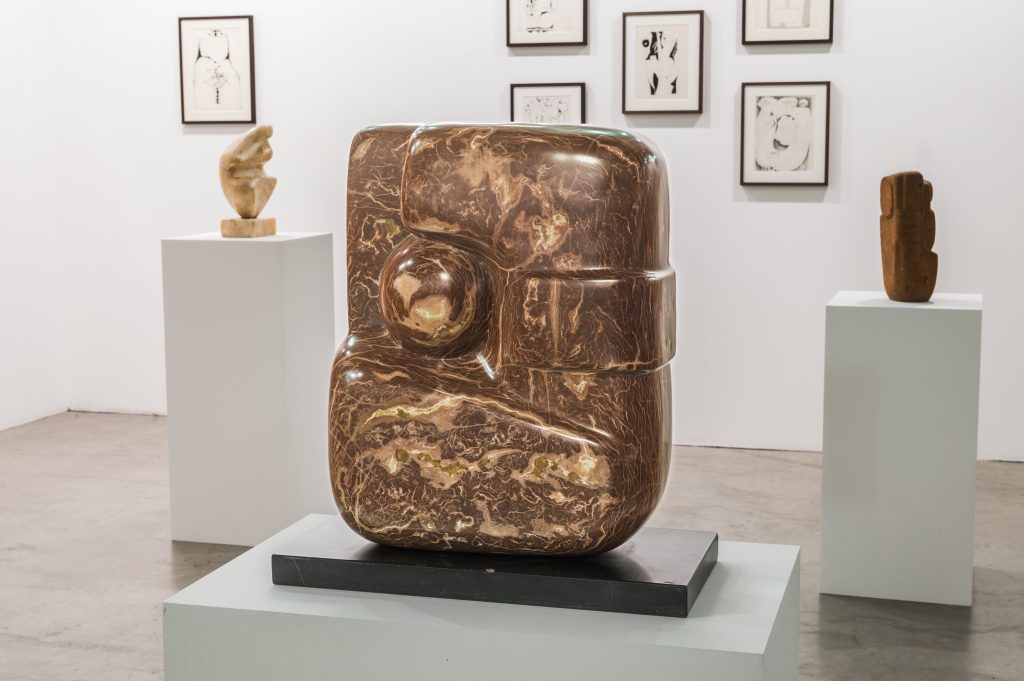
The annual Italian event is where galleries dare to let overlooked or lesser-known artists shine—and the gambit pays off.

Devorah Lauter

The annual Artissima has a nickname; it is known as the “curator’s fair”, because it’s a one-stop shop for institutional exposure.
You don’t exhibit at Turin’s Artissima art fair, which marked its 30th year November 3 to 5, for sensational sale numbers, I was told, but for its discerning public, packed with curators. “You can make sales here, but the main reason you do it, is because they invite different curators from all over Europe, so you can get your artists some exposure,” said Los Angeles dealer Chris Sharp, debuting David Gilbert’s intriguing painterly photographs of drooping paper cutouts and slanted light in Europe. “If I make some sales on top of that, great. Different fairs have different profiles,” he said.
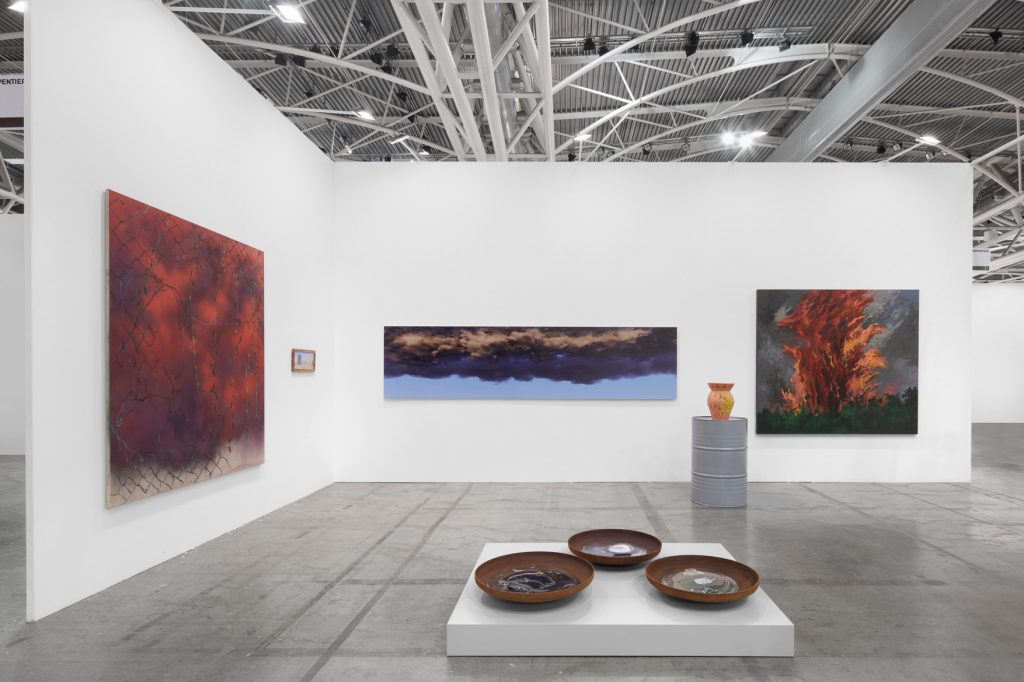
Mor Charpentier’s booth at Artissima. Photo: GRAYSC.
As such, Artissima doesn’t leave museum attendance to chance. A long list of curators from top European institutions are asked to preside on juries for the event’s prizes, and others curate portions of the program, and surrounding projects in Turin’s array of art spaces and foundations, nestled within the city’s baroque architecture, or bursting from former industrial factories facing the snow-capped Alps. I counted 29 curators on Artissima juries, and another 11 who attended and/or worked on simultaneous local exhibitions.
In addition to that, relatively accessible participation fees, thanks to its ownership by the public Fondazione Torino Musei, also leave galleries room to take risks.
“I’m really happy, because I got all the curators I wanted,” said the fair’s director Liugi Fassi, at an opening dinner for Michelangelo Pistoletto’s exhibition “Many of one,” marking his 90th birthday at the city’s unmissable contemporary art museum and former Savoy castle, Castello di Rivoli. Pistoletto was also in town, and he sat, last-supper style, nearby in the middle of a long rectangular table beside fellow Arte Povera artists Gilberto Zorio, Giuseppe Penone, and curators including Hans Ulrich Obrist and Emma Lavigne.
The Artissima-supporting Fondazione Arte CRT earmarked 200,000 euros ($213,000) to spend on “long-term loans” to Castello di Rivoli and Galleria Civica di Arte Moderna [GAM]. Importantly, this year the foundation’s nominated president, Turin’s grande dame, collector Patrizia Sandretto Re Rebaudengo, renewed the Fondazione Arte CRT’s committee, making it more international. It now includes Susanne Pfeffer, of Frankfurt’s MMK, Manuel Segade Lodeiro, of Madrid’s Reina Sofia, Obrist, and Suhanya Raffel, of Hong Kong’s M+, to name a few.
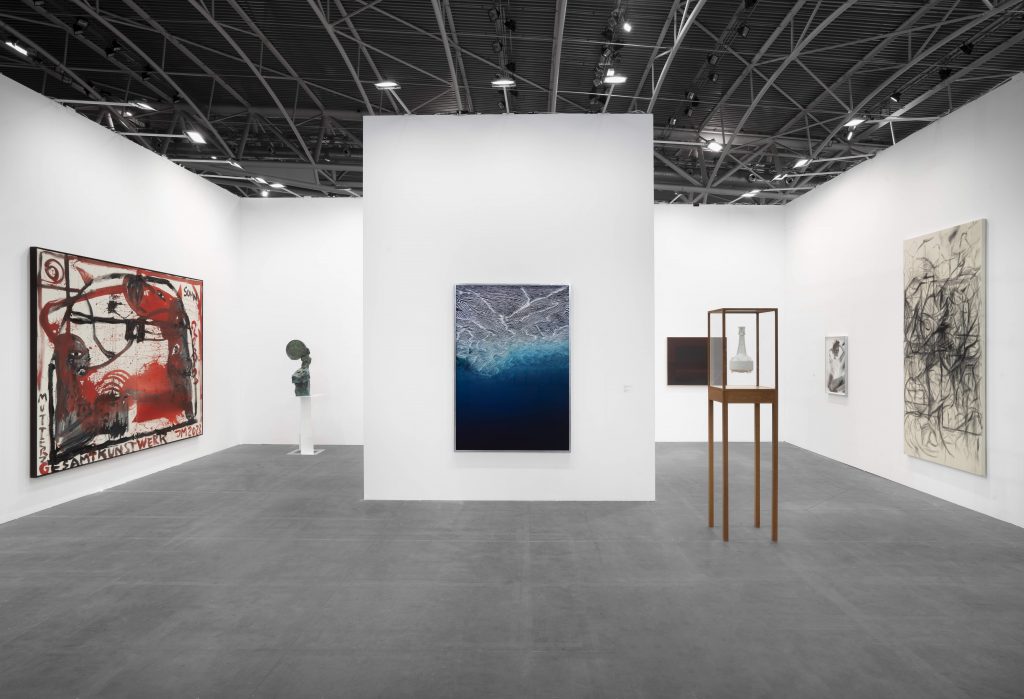
Sies + Höke’s booth at Artissima. Photo: Andrea Rossetti / Tiziano Ercoli. Courtesy: the artists and Sies + Höke, Düsseldorf.
By the fair’s second day, the Fondazione Arte CRT announced acquisitions of works by Marwa Arsanios from the gallery Mor Charpentier, who also won the Carol Rama and the ad occhi chiusi prize by the Merz Foundation; pieces by Steffani Jemisson, Cemile Sahin, Lorenza Boisi, Francesco Cavaliere, and Alessandro Pessoli were also acquired.
The Fondazione Arte CRT curator committee could also be found cheerfully dining at Sandretto Re Rebaudengo’s art-filled home on the fair preview night, coinciding with the opening of a solo exhibition by Polish artist Paulina Olowska at her Turin-based foundation.
Conversation grew somber as the night wore on, with misgivings surfacing around events in the Middle East. Some shared stories of antisemitic comments heard within the art world, which is deeply splintered over the conflict. Bernard Blistène, former director of the Centre Pompidou in Paris, did not hide his fears of the generally “awful period we are living through,” and a pensive Marc Spiegler, though not directly referring to global events, contemplated the “melancholic” beauty of the Italian city. That did not stop the former Art Basel global director from hitting the after-party scene in Turin, offering all the details about where to go to a curious bystander. As guests urgently descended on a sumptuous table of desserts, a relief to be able to drown collective qualms in a night’s celebrations was apparent.
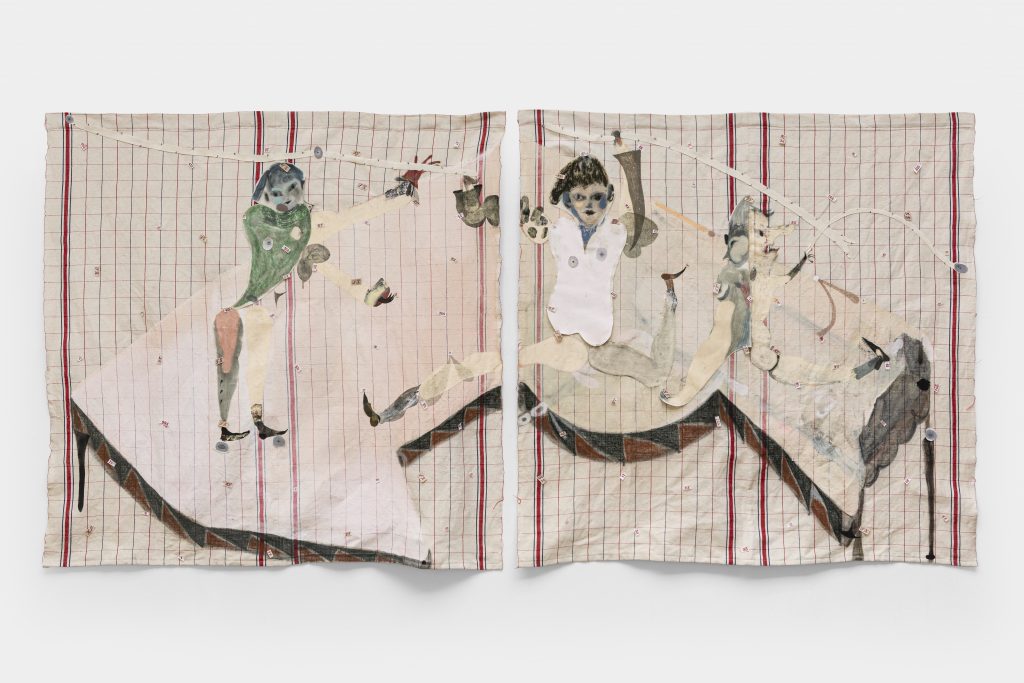
Guglielmo Castelli, if opened people I should find landscapes (2023), mixed media on canvas. Photo: Nicola Morittu. Courtesy: the artist and Rodeo, London/Piraeus.
Amid difficult global tensions, the fair’s central theme, “Relations of Care,” felt pertinent. The idea, conceived by Brazilian anthropologist Renzo Taddei, was conceived with a more environmentalist emphasis on “care” towards “the natural world,” and “all species,” but Fassi, visibly moved by current divisions, hoped to send a message of “putting care at the forefront of our lives,” at every level.
At one of the fair’s three curated sections was the presentation “Back to the Future,” which included monographic exhibits of overlooked, pioneering women working between the 1950s to 1980s, in places where they were less visible. The work on display in this section, made during the fall of colonialism, felt like ripe fodder for a museum show. According to its co-curator, Francesco Manacorda, the forthcoming director of Turin’s Castello di Rivoli starting in January 2024, the extensive “digging” that went into finding the 10 artists featured will be put to “precious” use. “There’s not just one story to tell in our history. There are many,” Macorda said. “It’s a beginning.”
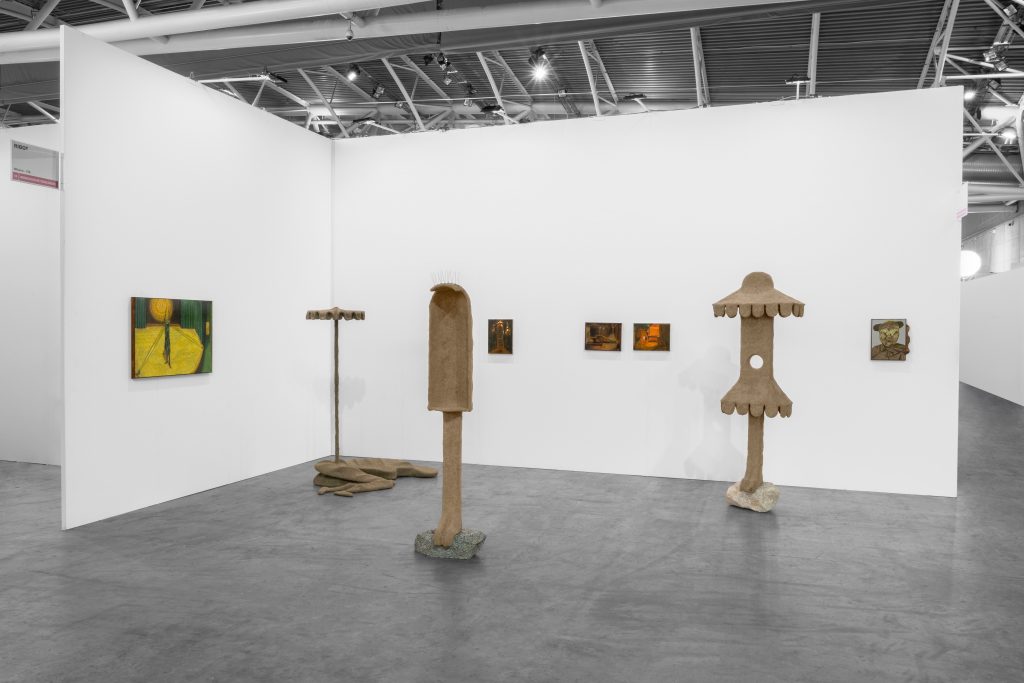
RIBOT’s booth at Artissima 2023.
Egyptian Inji Efflatoun (1924–89), for instance, shown at Lilia Ben Salah, was a Marxist and feminist, who worked with the Surrealists, and was jailed for four years by Egyptian president Gamal Abdel Nasser for her views. Her vibrant, figurative paintings of women working in fields, were created once released from prison in 1963. Another favorite was Jordanian sculptor Mona Saudi (1945- 2022) at Lawrie Shabibi. Come to admire her exhibition, the section could be seen as “a protest against forgetting,” said Obrist.
The same could be said of the urgent show at the Castello di Rivoli, “Artists in a Time of War,” curated by Christov-Bakargiev, featuring artists who have experienced war in different parts of the globe, beginning with the Holocaust and spanning regions like Afghanistan and Ukraine, to name a few.
In the current political context, including the Italian government’s recent appointment of far-right individuals to head cultural institutions, the Castello exhibition was a welcomed gesture towards greater understanding, a testament to the urgency of art in trying times. “I find [both exhibitions] a much more pertinent and intelligent manner of addressing these questions than simply avoiding the subject,” said Marion Coindeau, director of Galerie Derouillon in Paris. Luckily, there is a fair and an art scene like that of Turin that dares to do it.
More Trending Stories:
Revealed: The Major Mystery Consignors of New York’s Multi-Billion-Dollar Fall Auction Season
Christie’s Pulled Two Works by a Prominent Middle Eastern Artist From Sale After a Complaint